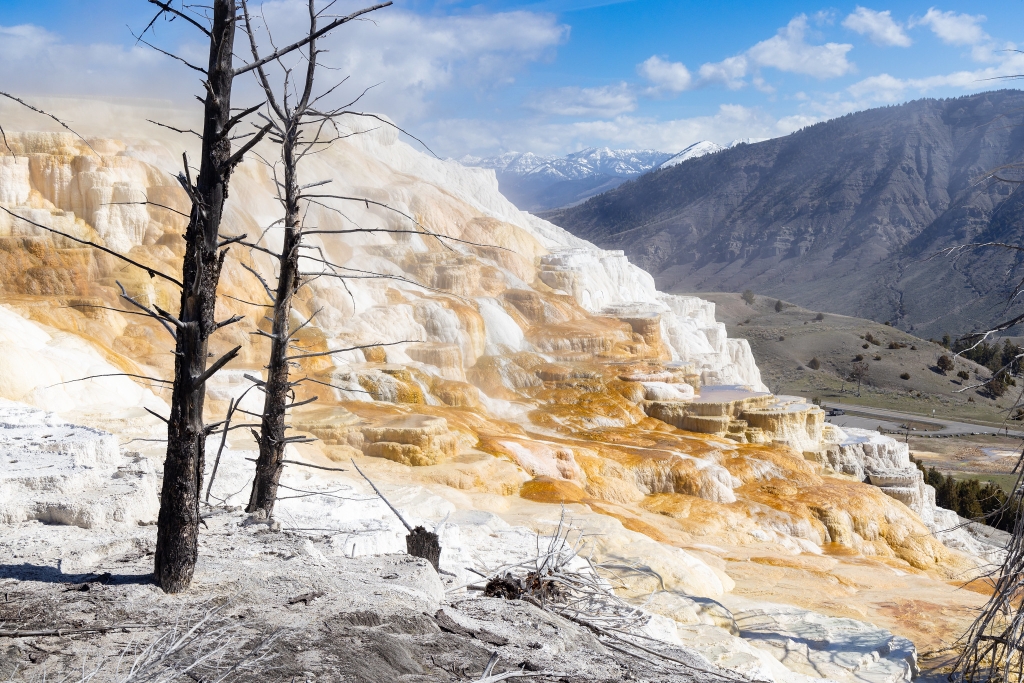
Imagine you are here in the late 1800s, a time when yellow filamentous bacteria was prominent. What colors are present today?
This spring occasionally goes dormant for brief periods of time. Vibrant pinks and neons are sometimes seen.
Mammoth Hot Springs
A network of fractures and fissures form the plumbing system that allows hot water from underground to reach the surface at Mammoth Hot Springs. Small earthquakes may keep the plumbing open. The water comes from rain and snow falling on surrounding mountains and seeping deep into the earth where it is heated.
The volcanic heat source for Mammoth Hot Springs remains somewhat of a mystery. Scientists have proposed two sources: the large magma chamber underlying the Yellowstone Caldera or a smaller heat source closer to Mammoth.
For hundreds of years, Shoshone and Bannock people collected minerals from the Mammoth Hot Springs terraces for white paint.
Travertine Terraces
Travertine terraces are formed from limestone (calcium carbonate). Water rises through the limestone, carrying high amounts of dissolved calcium carbonate. At the surface, carbon dioxide is released and calcium carbonate is deposited, forming travertine, the chalky white rock of the terraces. Due to the rapid rate of deposition, these features constantly and quickly change.
Accessibility
A wheelchair-accessible trail to this view of the spring is available.
Use Caution in Hydrothermal Areas
- Stay on boardwalks and designated trails.
- Hydrothermal water can severely burn you.
- Never run, push, or shove.
- Supervise children at all times.
- Do not scratch hydrothermal mats.
You are responsible for your safety.
Think safety, act safely. Yellowstone is a dangerous place.
Is there something we missed for this itinerary?
Itineraries across USA


















































